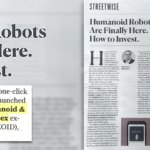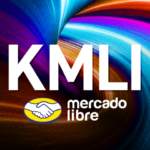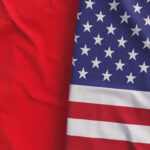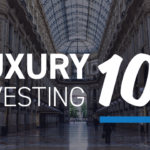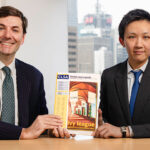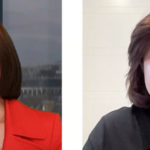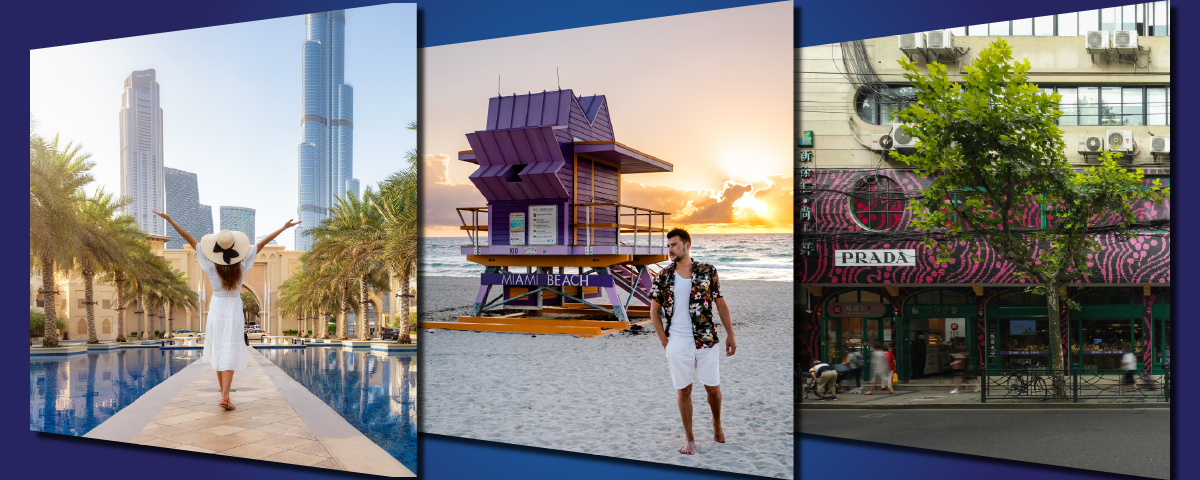
2024 Luxury Outlook: A Tale of Two Halves and New Catalysts
By Derek Yan, CFA, and Cole Wenner
Global luxury stocks posted strong returns during the pandemic, fueled by stimulus and a surge in online shopping. Although China's extended lockdowns dragged performance in 2022, top luxury names exploded to a hot start last year as China officially reopened. The sector gained over 60% during the first half (1H) of 2023 on an anticipated uptick in outbound travel from Mainland China and increased consumer activity.1 However, growth began to normalize in the second half of the year.
Now, with top luxury names sitting at attractive valuations, luxury stocks may be poised for a strong 2024. The luxury market is embracing an improving macroeconomic backdrop and new future growth drivers like brand extensions, the U.S. Sun Belt migration, and rising wealth in the Middle East.

Industry Growth Update
Many luxury research analysts predict a slowdown in 1H luxury sales growth, which we believe is a return to normalized growth after a period of accelerated expansion. The global luxury goods market has a compound annual growth rate (CAGR) of 6% from 1996 to 2022, with only two significant declines.2 Investors could see a stronger rebound in the second half of 2024, with HSBC citing an expected 8% increase in sales growth in fiscal year 2024.3
While inflation continues to weigh on traditional consumer staple companies, Marc Metrick, CEO of luxury fashion and designer clothing store Saks, told Yahoo Finance that he is “not seeing any signs of consumers trading down luxury to save money. Luxury is permanent; luxury is here to stay," Metrick stated. "People are not going to trade down out of it. Folks that reached in, maybe a few years ago, even last year, might not be reaching in this year, but the core luxury consumer doesn't trade down." Looking ahead, Metrick believes 2024 will be a year of two halves, which aligns with HSCB's expectations.
While the first half of 2024 is uncertain, US economists expect more dovish policies in the second half of 2024. Lowering rates makes borrowing money cheaper, resulting in consumer and business spending, as well as increased investment, which can boost asset prices. Historically, any policy that the U.S. Federal Reserve System (FED) implements, the European Central Bank (ECB) follows. A dovish policy approach in the U.S. and Europe may be a substantial catalyst for the KraneShares Global Luxury Index ETF (Ticker: KLXY), as most luxury companies are listed on European exchanges. We expect top luxury names to monetize the global economy's recovery by expanding capacity, raising prices, and increasing brand investment.
Proven Track Record
The luxury market has a proven track record of strength and resilience in uncertain periods thanks to numerous fundamental characteristics tied to the sector. In KraneShares' last report: ‘Global Luxury: A Golden Opportunity?', we covered underlying values like the "true-luxury" consumer and future growth drivers like expanding E-commerce efforts and rising wealth in China. In this report, we will dive into untapped and innovative ways luxury companies can capture new growth, including brand extensions, the U.S. sunbelt boom, and rising wealth in the Middle East.
Brand Extensions
When it comes to luxury, branding is everything. Luxury is often referred to as a mindset. Luxury products with the right branding can capture this mindset and can be sold at a significant price markup. In today's social media-dominated world, luxury companies have evolved past traditional marketing toward a focus on immersive experiences that allow consumers to step into the world of the brand. Moving forward, we believe luxury companies will expand past conventional promotion efforts by providing buyers with a 360-degree luxury lifestyle beyond fashion and beauty.
In recent years, we've witnessed luxury companies experiment with brand extensions by opening restaurants, cafés, hotels, and other alternative business lines worldwide to drive foot traffic in stores and attract new customers. One instance of a successful brand extension was in February 2020, when LVMH brand Louis Vuitton (9.68% weight in KLXY as of 12/31/2023) opened its largest flagship store in Japan, with its first Louis Vuitton cafe, 'Le Café V,' situated inside the store's top floor. Influencers and aspirational consumers flocked to the store at the chance to take a picture in Louis Vuitton's café. Through this phenomenon, the brand's Japan store transformed into a luxury destination, with influencers providing organic online coverage and marketing, resulting in elevated foot traffic and sales.

We expect the luxury sector to continue to offer experiences in the areas of dining, travel, and entertainment to help build brand value, secure new customers, and potentially increase revenue growth in keystone business lines over the next decade.

U.S. Migration to the Sun Belt
Ever since Tiffany & Co. paved the way for New York's commercial development of Fifth Avenue in 1940, the city has been synonymous with luxury shopping. In the late 1970s, the emergence of Rodeo Drive cemented Los Angeles as a global luxury epicenter. Now, we are seeing a new wave of luxury expansion beyond traditional luxury cities into the Sun Belt states.

Luxury brands are investing heavily in the southern strip of the U.S. after a surge in popularity during the pandemic. In 2023, Texas was home to 6 of the 15 fastest-growing cities in North America.4 Other Sun Belt cities like Miami, Tampa, Charleston, and Phoenix are experiencing significant population growth as well. As these Sun Belt cities develop, so will traditional brick-and-mortar shopping hubs.
Leasing by luxury retailers in the south has already shown signs of growth. Nearly half of new luxury store openings in 2022 were in the southern belt of the United States.5 Research firm JLL stated, "Luxury retailers recorded significant revenue growth across the board last year (2022) and have cited retail store expansion as a key driver of that growth."6 We believe that the Sun Belt migration will serve as a mega trend for luxury businesses over the next decade and provide further opportunities for expansion in the US.

Rising wealth in the Middle East
The Middle East is transitioning to a new age of growth. Governments in the region are utilizing wealth created through the energy sector to invest in a new-age economy. This evolution may provide a significant opportunity for further prosperity and the emergence of ultra-wealthy families in the Middle East.
While the global wealthy population is projected to expand by 57% by 2027, the Middle East is on track to significantly outpace global growth with an expected 82.4% rise in High-Net-Worth Individuals (HNWI) and a 33% rise in Ultra-HNWI over the same period.7 The rise of wealth in the Middle East indicates a significant increase in disposable income and capital in the region. This will likely translate into heightened demand for luxury goods, as affluent individuals and families often seek high-end products to reflect their status.
Gucci, a brand owned by Kering (4.12% weight in KLXY as of 12/31/2023), expanded its high jewelry collection to the United Arab Emirates (UAE) in March 2022. Additionally, the brand inaugurated its second high jewelry boutique in Kuwait, following the success of its initial boutique in Paris. According to Patrick Chalhoub, the CEO of the Dubai-based luxury retailer and distributor Chalhoub Group, renowned brands like Chanel, Hermès (5.85% weight in KLXY as of 12/31/2023), Louis Vuitton (9.68% weight in KLXY as of 12/31/2023), Cartier (7.79% weight in KLXY as of 12/31/2023), and Tiffany are actively implementing local strategies in the UAE.8 These strategies aim to engage consumers in the region through collaborations, dedicated collections, and immersive events set in iconic locations such as Al-Ula in Saudi Arabia. We believe the Middle East could become a more influential market for global luxury brands in the coming years, akin to established markets like the US, Europe, and China.

Opportunity
The KraneShares Global Luxury Index ETF (Ticker: KLXY) provides convenient access and exposure to leading developed market luxury companies listed across multiple exchanges, including in the United States, France, the United Kingdom, Italy, Switzerland, and Japan. These companies operate across all global luxury industries, including leather goods, jewelry, accessories, skincare, cosmetics, beverages, travel, and supercar businesses.
We believe the return of reasonable valuations in the global luxury sector entering 2024 may offer investors a compelling long-term growth opportunity. The 12-month forward consensus PE for the luxury sector dropped from a peak of 40X during the pandemic to 26X by the start of 2024, which is closer to the 20-year average.9 This valuation is particularly attractive when weighing the fundamental characteristics of the luxury sector and the future growth drivers covered in this report.
For KLXY standard performance, top 10 holdings, risks, and other fund information, please click here.
Holdings are subject to change.
This should not be regarded as investment advice or a recommendation of specific securities. Holdings are subject to change. Securities mentioned do not make up the entire portfolio and, in the aggregate, may represent a small percentage of the fund.
Definitions:
Compound Annual Growth Rate (CAGR): The mean annual growth rate of an investment over a specified period of time longer than one year.
Citations:
- Data from Bloomberg as of 12/31/2023.
- Data from Bain & Company as of June 2023.
- Data from HSBC as of December 2023.
- Data from Raleigh Realty as of August 2023.
- Data from Forbes as of October 2023.
- Data from JLL as of October 2023.
- Data from Knight Frank LLP as of December 2023.
- Data from Jing Daily & Chalhoub Group as of December 2023.

